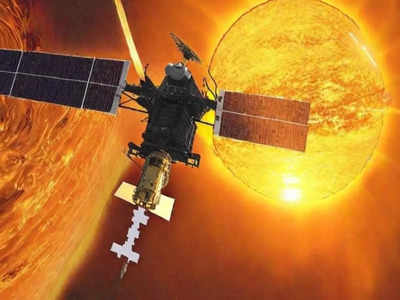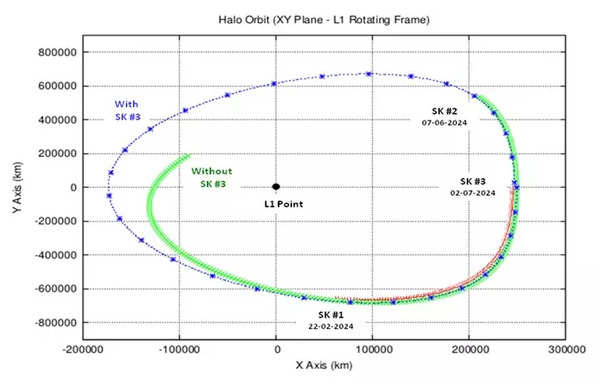- News
- Science News
- India’s Aditya-L1 completes first Halo orbit
India’s Aditya-L1 completes first Halo orbit
India’s first space-based solar observatory, Aditya-L1, successfully completed its first halo orbit around the Sun-Earth L1 Lagrangian point, Isro announced on Monday. The observatory was launched on September 2, 2023, and was inserted into its targeted halo orbit on January 6, 2024. This achievement demonstrates the spacecraft's capacity to maintain its complex trajectory. Aditya-L1 performed its first two manoeuvres on February 22 and June 7, 2024. The third manoeuvre, conducted on July 2, 2024, ensured the spacecraft's transition into its second halo orbit around L1.

Representative photo
BENGALURU: Isro Monday said that India’s first space-based solar observatory, Aditya-L1, has successfully completed its first halo orbit around the Sun-Earth L1 Lagrangian point. The solar observatory, launched on Sept 2, 2023, and inserted into its targeted halo orbit on Jan 6, 2024, has now demonstrated its ability to maintain its complex trajectory.
“The Aditya-L1 mission, designed to study the Sun, takes approximately 178 days to complete one revolution around the L1 point.However, the spacecraft faces various perturbing forces that could cause it to deviate from its intended path. To counter these forces, we’ve performed three crucial station-keeping manoeuvres since the mission’s inception,” Isro said.

The first two manoeuvres took place on Feb 22 and June 7, 2024, respectively. On Monday (July 2), the third manoeuvre marked a critical juncture, ensuring the spacecraft’s transition into its second halo orbit around L1.
“The mission’s success hinges on the precise modelling of complex dynamics and the accurate understanding of perturbing forces acting on the spacecraft. These factors are crucial in determining the trajectory and planning orbit manoeuvres with high precision,” Isro said.
The space agency also released a diagram illustrating the spacecraft’s orbit, depicted as a blue trajectory projected onto the X-Y plane. The image also shows the potential divergent path (in green) that the spacecraft could have taken without accurate manoeuvring.
As Aditya-L1 continues its journey, it promises to provide valuable insights into solar phenomena, further advancing our understanding of the Sun and its effects on Earth.
“The Aditya-L1 mission, designed to study the Sun, takes approximately 178 days to complete one revolution around the L1 point.However, the spacecraft faces various perturbing forces that could cause it to deviate from its intended path. To counter these forces, we’ve performed three crucial station-keeping manoeuvres since the mission’s inception,” Isro said.

The first two manoeuvres took place on Feb 22 and June 7, 2024, respectively. On Monday (July 2), the third manoeuvre marked a critical juncture, ensuring the spacecraft’s transition into its second halo orbit around L1.
This achievement validates the sophisticated flight dynamics software developed in-house at the UR Rao Satellite Centre (URSC) in Bengaluru.
“The mission’s success hinges on the precise modelling of complex dynamics and the accurate understanding of perturbing forces acting on the spacecraft. These factors are crucial in determining the trajectory and planning orbit manoeuvres with high precision,” Isro said.
The space agency also released a diagram illustrating the spacecraft’s orbit, depicted as a blue trajectory projected onto the X-Y plane. The image also shows the potential divergent path (in green) that the spacecraft could have taken without accurate manoeuvring.
As Aditya-L1 continues its journey, it promises to provide valuable insights into solar phenomena, further advancing our understanding of the Sun and its effects on Earth.
End of Article
FOLLOW US ON SOCIAL MEDIA
